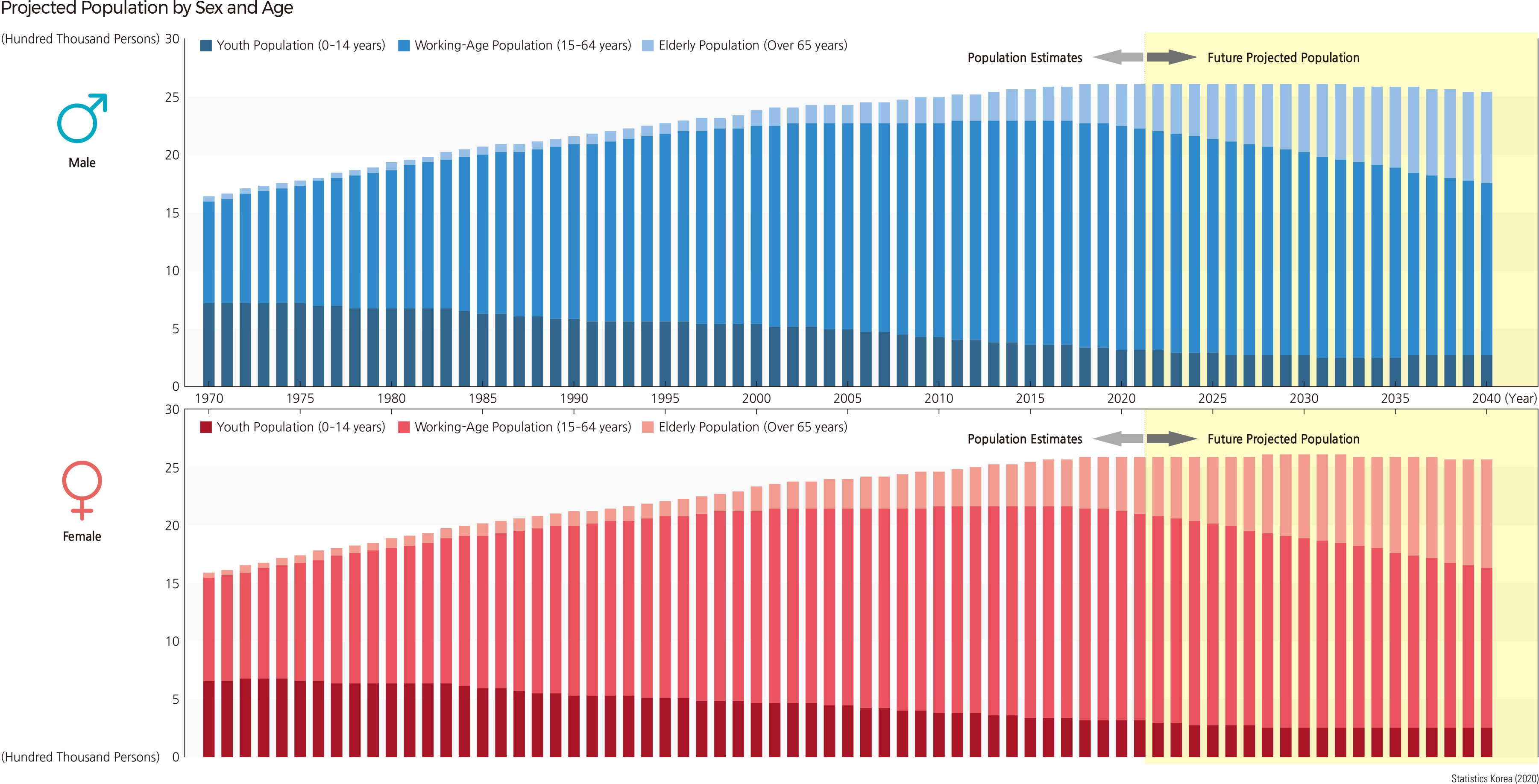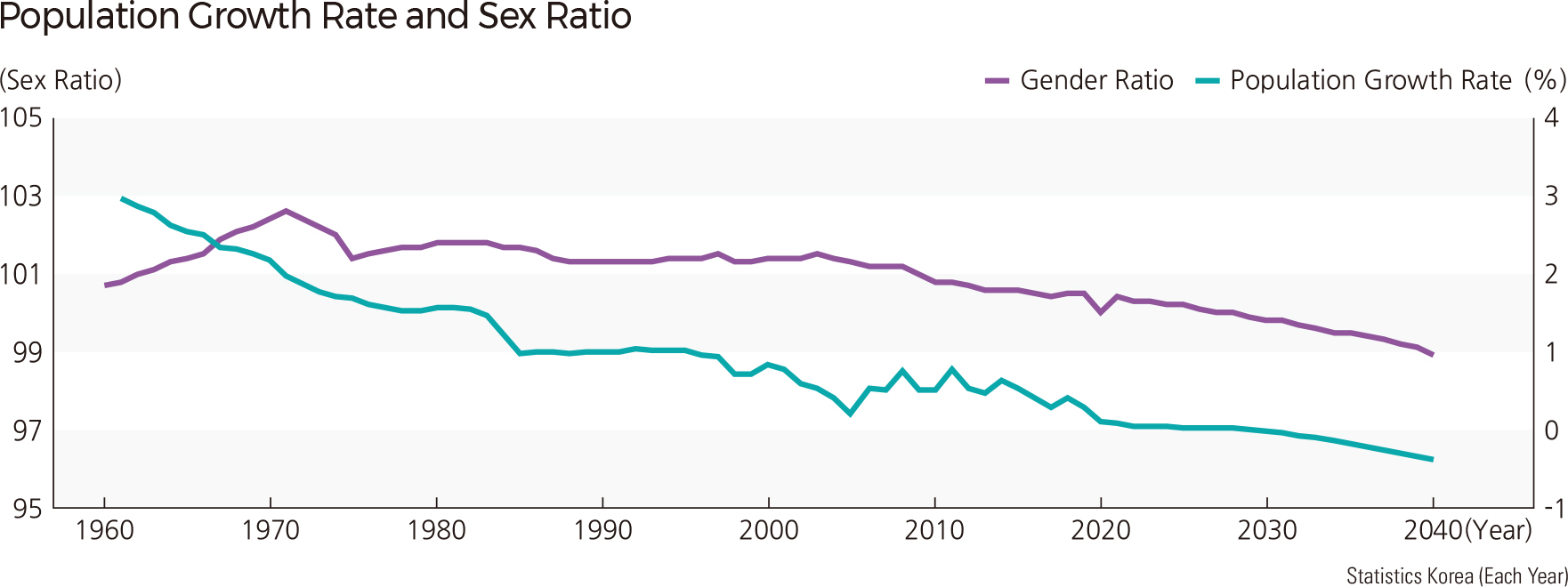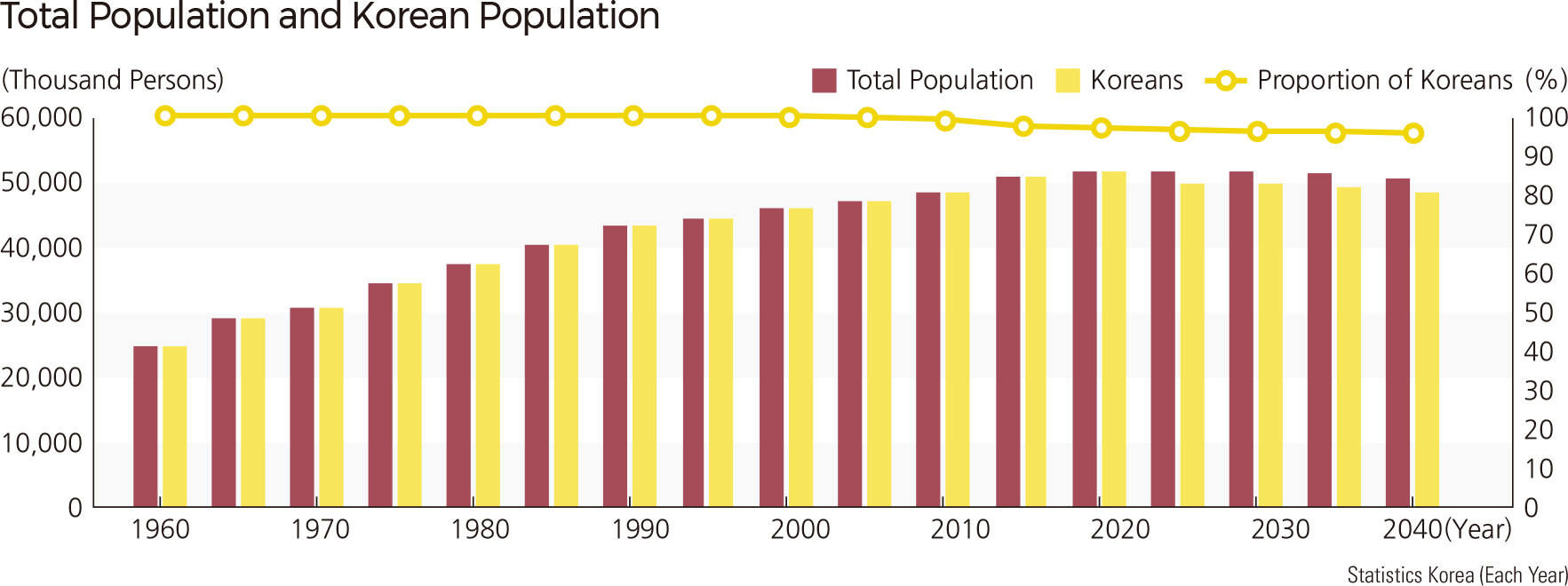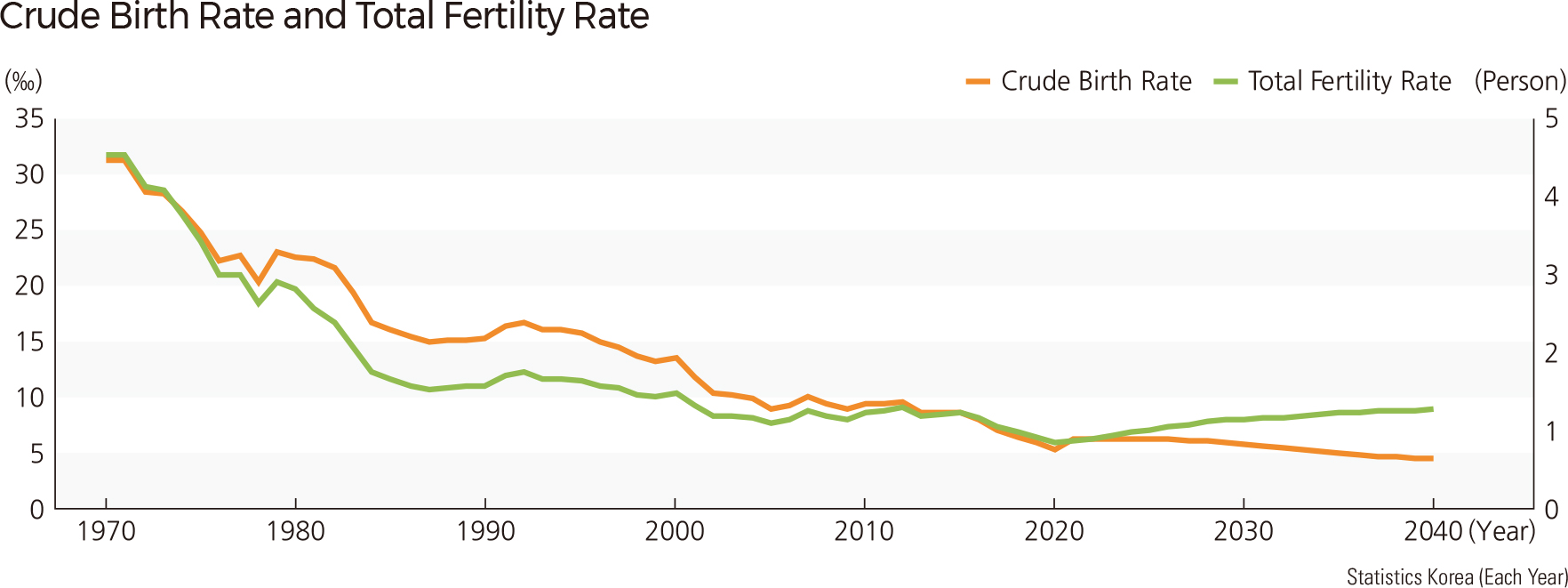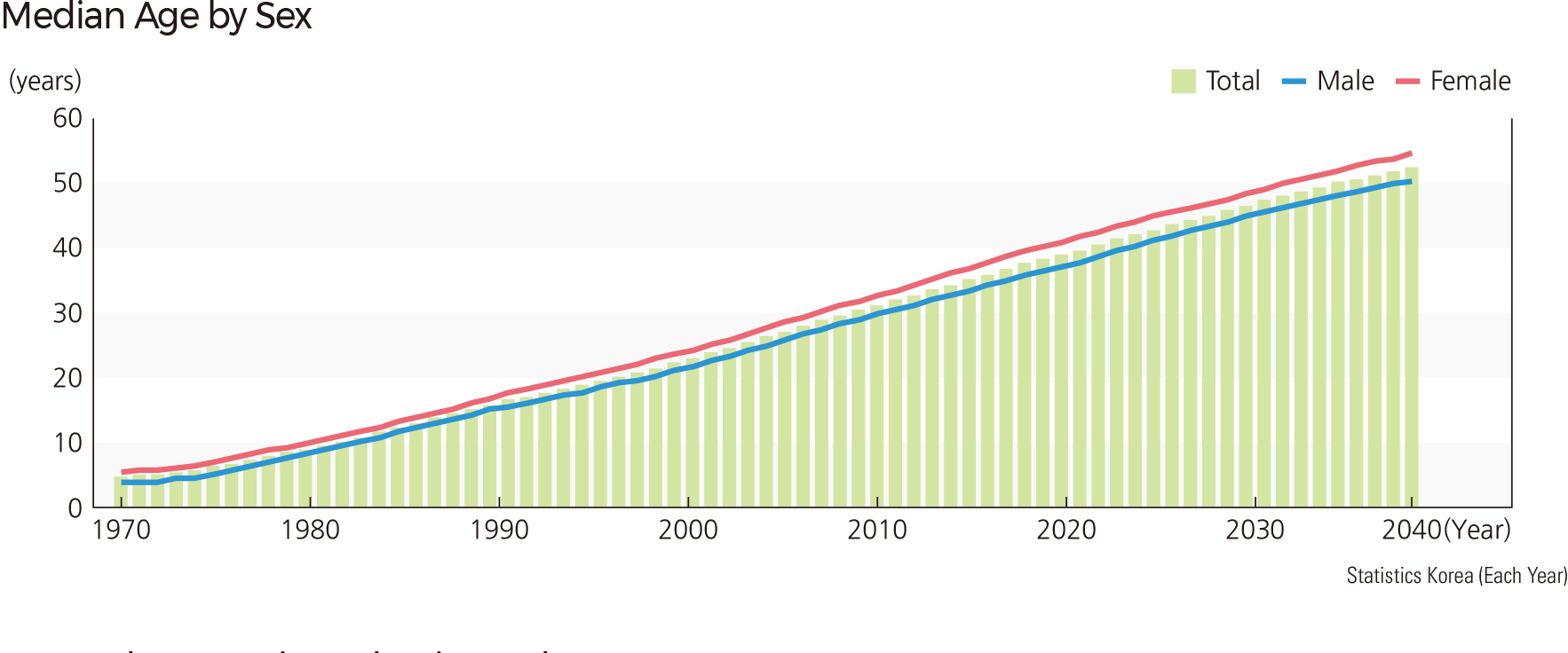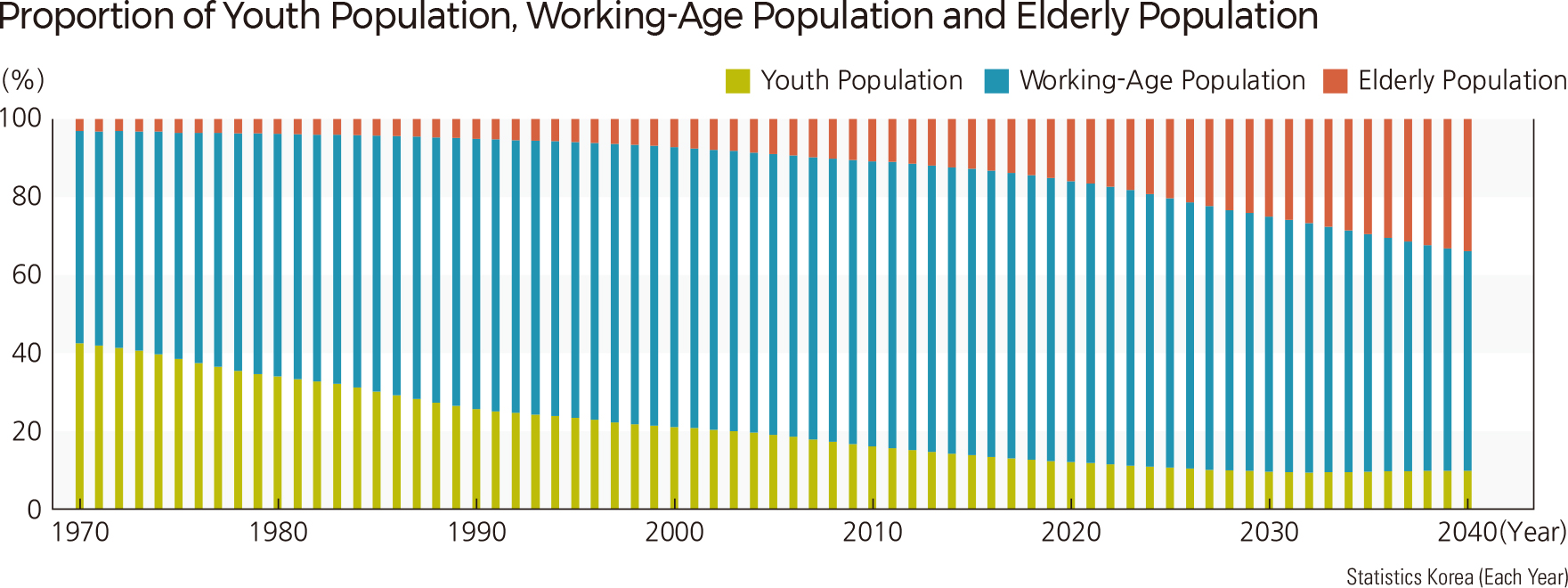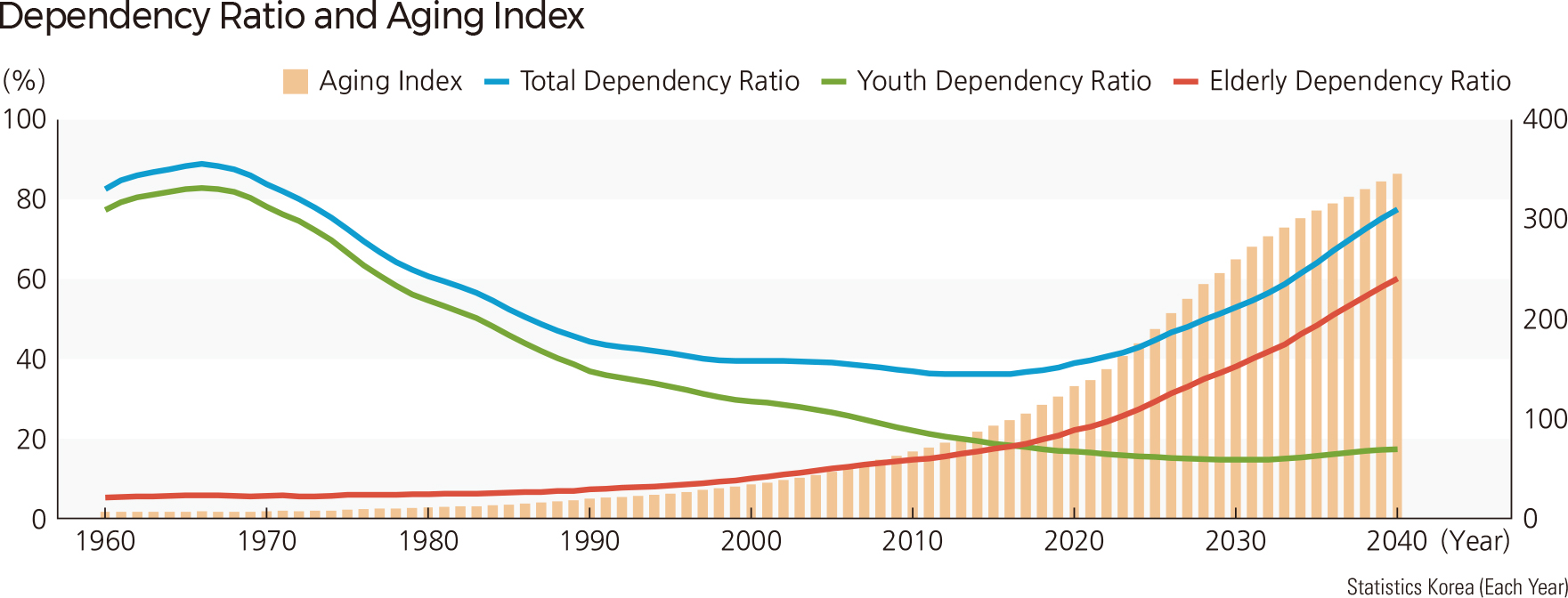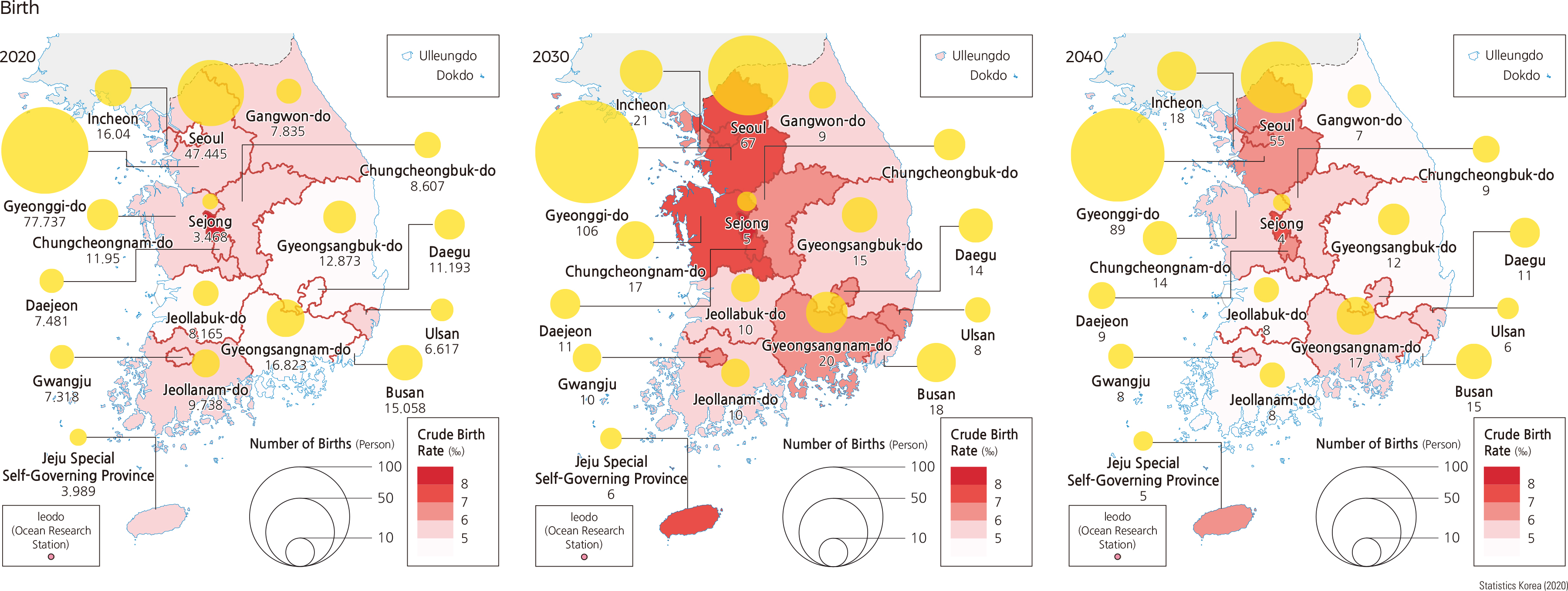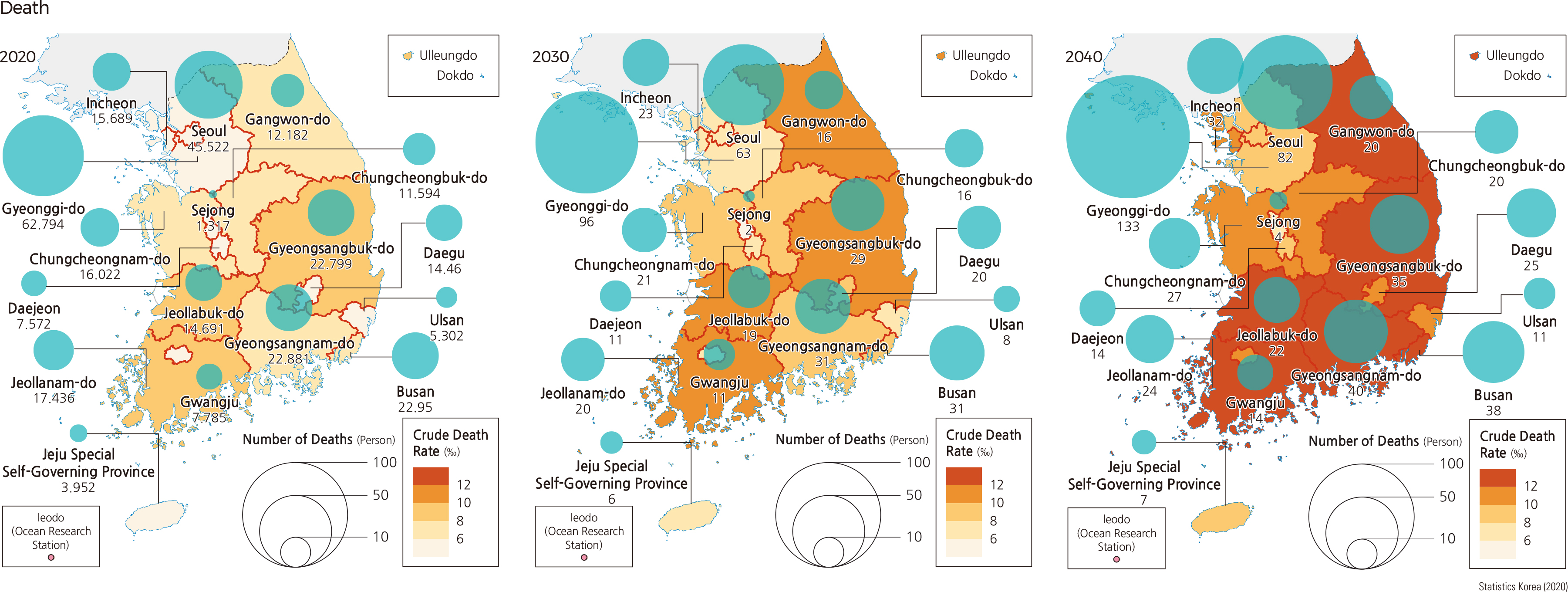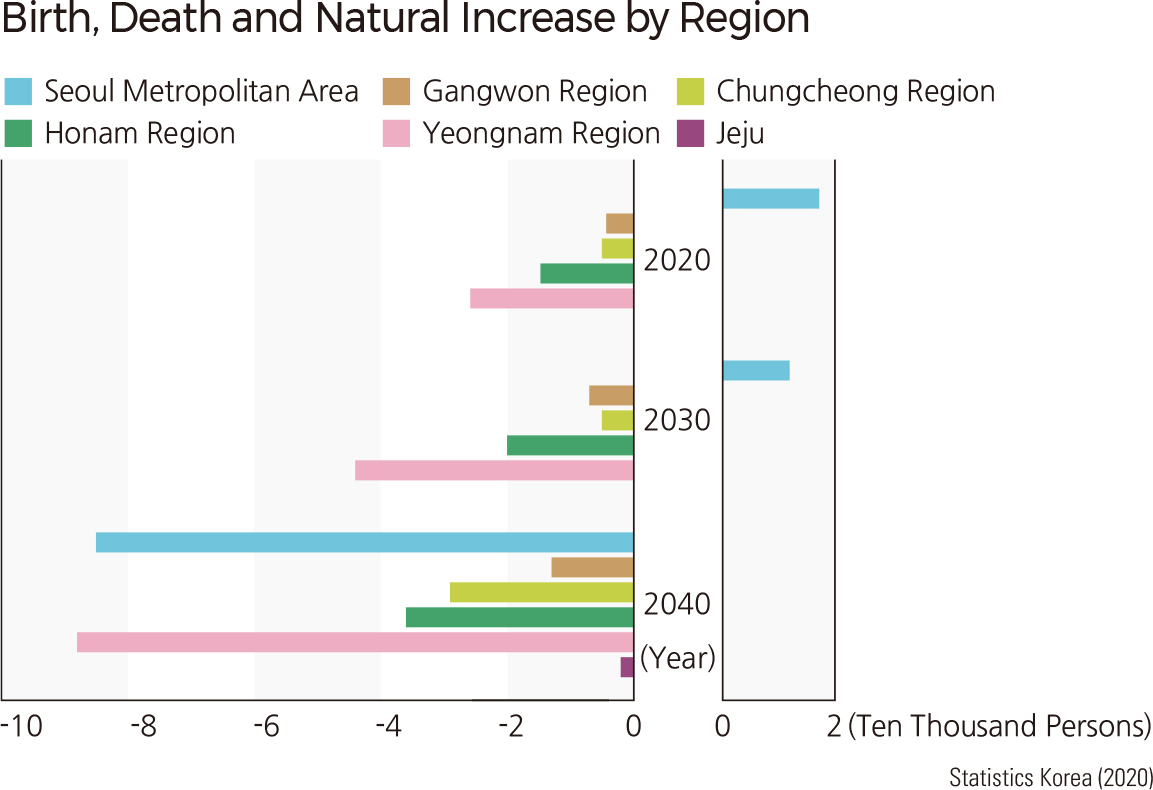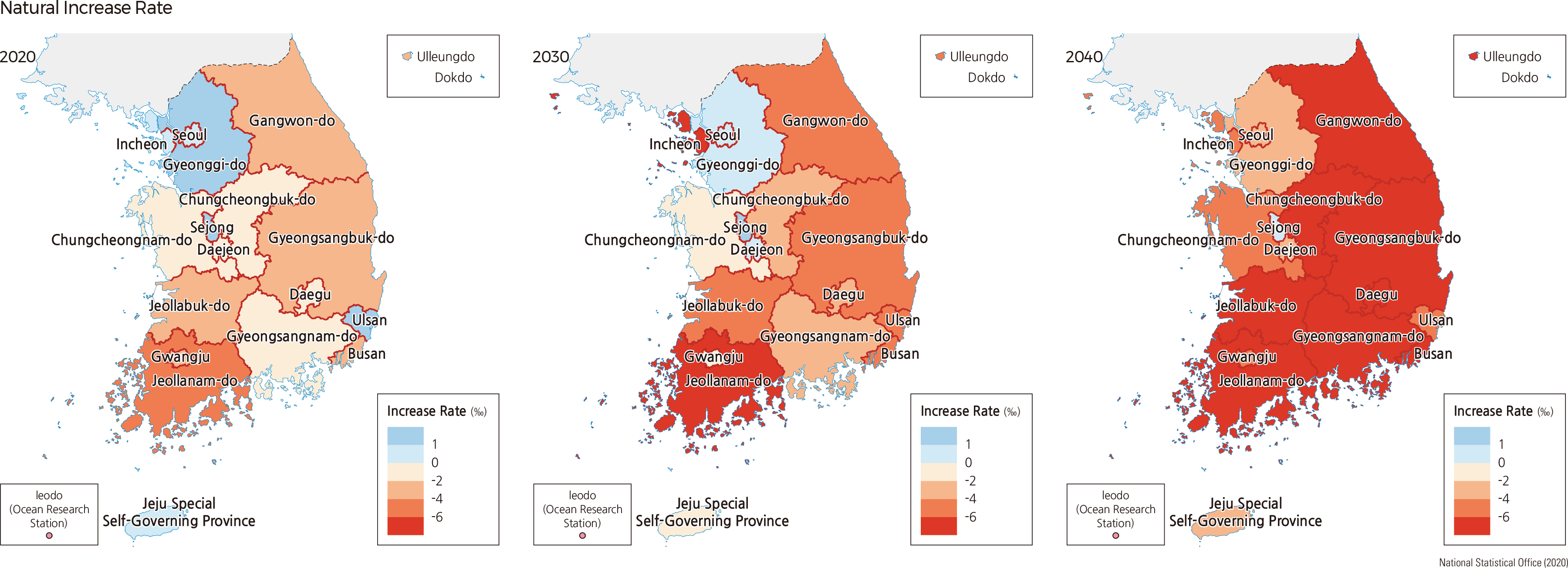English III 2021
A projected population refers to estimates of the structure and size of the future population by reflecting data on factors of birth, death, and international migration to the base population as of July 1 of the starting year. A future population is projected every five years by classifying them as a low, middle, and high level of variable factors. The latest population estimate is a projection made by applying the population balance equation, which adds births and net international migration to the base population as of July 1, 2017, and subtracts deaths. According to the 2017 Population Projection, the total population of the country with foreigners will reach a peak of 51.94 million in 2028 and then gradually decrease to 50.85 million in 2040. The proportion of the Korean population was above 99 percent by 2005, but it is gradually decreasing and is expected to decrease to 96 percent by 2040. The country’s population growth rate will continue to decline along with the trend of population decrease, turning negative from 2030 and is anticipated to decrease to -0.38 percent in 2040. Based on the projection, the sex ratio will gradually decline until 2028, when the male and female populations are balanced. However, there will be more women than men after 2029. As of 2020, the total population was about 51.82 million, and the number of births was less than the number of deaths, thus starting the decline of the natural population (natural increase -32,611 people, natural increase rate -0.6 people). As a result, the national crude birth rate is expected to decrease from 5.34 in 2020 to 4.5 in 2040, while the national-level total fertility rate is anticipated to increase slightly. As a result, the median age of the country is expected to increase along with the decrease in its population. Compared with 2020, the median age of the entire country in 2040 is projected to increase by about 10 years to 54. The median female age (56 years) is estimated to be higher than the median male age (53 years), which can be interpreted as a longer life expectancy for women than for men. Looking at the population structure estimates by age, the youth and working-age populations will continue to decrease, while the elderly population will increase sharply. Compared to 2020, the youth population and the working-age population of 2040 are expected to decrease by 2.3 percentage points and 15.6 percentage points, respectively, and the elderly population is anticipated to increase by 17.9 percentage points. According to this trend, the youth dependency ratio will gradually decrease. However, the old-age dependency ratio will rise sharply, and the total dependency ratio is expected to increase. As the nation’s population grows old, the aging index, which is the ratio of the youth population to the elderly population, is also expected to increase significantly. |
